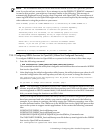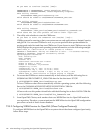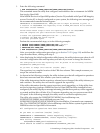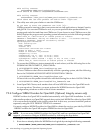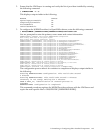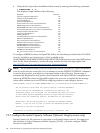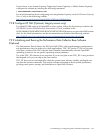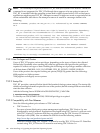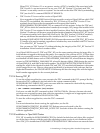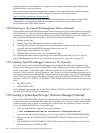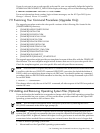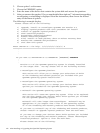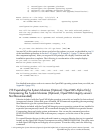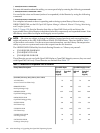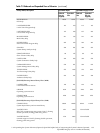When TDC_RT Version 2.1 or any newer version of TDC is installed, files associated with
TDC Version 1.n are not removed. In any case, TDC_RT Version 2.1 (or later) and TDC
Version 1.n can safely coexist on a system. You can remove the older TDC files by uninstalling
TDC (use the DCL command PRODUCT REMOVE).
• TDC Version 2.2 on an earlier version of OpenVMS
If you upgrade to OpenVMS Version 8.4 from an earlier version of OpenVMS on which TDC
Version 2.2 was installed, files shared by TDC_RT Version 2.2 and TDC Version 2.2 are
updated; these files are the documentation and support files listed in
SYS$COMMON:[TDC]README.TXT as common to all kit variants. Unless the TDC and
TDC_RT kits share the same baselevel number (for example, 102), image files installed with
TDC Version 2.2 are retained in their installed locations. Most likely, the downloaded TDC
Version 2.2 software will be more recent (higher baselevel number) than the TDC_RT Version
2.2 software installed with OpenVMS Version 8.4. The TDC Version 2.2 SDK (if installed)
and any additional documentation files installed with TDC Version 2.2 are retained.
Running SYS$STARTUP:TDC$STARTUP.COM causes the most recent TDC/TDC_RT Version
2.2 images to be used at runtime, regardless of whether they were installed with TDC Version
2.2 or with TDC_RT Version 2.2.
You can remove TDC Version 2.2 without affecting the integrity of the TDC_RT Version 2.2
installation if their baselevel numbers differ.
As of OpenVMS Version 8.2, TDC and TDC_RT use the same naming scheme for image files. A
build number is tagged to the image file names. For example, if the version of TDC_RT that ships
with your operating system is Version 2.2-60 (where 60 is the build number), then the files that
are installed will have names such as TDC$APISHR$I_V840-0060.EXE, where $I denotes Integrity
servers (or TDC$APISHR$A_V840-0060.EXE, where $A denotes Alpha), V840 denotes the version
of OpenVMS (8.4), and 0060 is the build number. The SYS$STARTUP:TDC$STARTUP.COM
startup file, which is also identical for both TDC and TDC_RT, uses this build number to determine
which image files to use. When a subsequent installation is performed with software that has
higher build numbers, the TDC$STARTUP.COM startup file uses the image files with the highest
build number appropriate for the current platform.
7.9.9.4 Running TDC_RT
To run the collector application, users can enter the TDC command at the DCL prompt. But first,
because the TDC command is not included in the system command table
SYS$LIBRARY:DCLTABLES.EXE, each user must add the command to their table by entering
the following command at the DCL prompt:
$ SET COMMAND SYS$COMMON:[TDC]TDC$DCL
Each user can add this SET command to their LOGIN.COM file. However, because elevated
privileges are required for most data collection operations, it might not be appropriate to add
this command to SYS$MANAGER:SYLOGIN.COM.
To start the collector application, enter the TDC command:
$ TDC
For more information about running the application, see the file
SYS$COMMON:[TDC]TDC_README.TXT. Release notes are located in the file
SYS$COMMON:[TDC]TDC_RELEASE_NOTES.TXT. See both of these files before running the
collector application.
7.9.9.5 Installation in OpenVMS Clusters
TDC_RT is installed in SYS$COMMON:[TDC] by default. Included are only those files required
to run the data collector with the particular operating system version it was distributed with.
Once TDC_RT is installed and SYS$STARTUP:TDC$STARTUP.COM has been run on each cluster
7.9 Initializing or Configuring Other Installed Components 149



